 |
 |
 |
| |
Switching from Combivir [CBV] (AZT/3TC) to Truvada [TVD] (TDF/FTC) Preserves Limb Fat: Results of a DEXA Sub-Study of a 48 Week Randomised Study
|
| |
| |
Reported by Jules Levin
15th CROI, Feb 3-6, 2008, Boston
G Moyle,1 M Fisher,2 and the SWEET Study Group3
1Chelsea and Westminster Hospital, London, UK; 2Brighton and Sussex University Hospitals, UK; 3See End Acknowledgements for List of Study Team
Background
--Dual nucleosides/tides remain the backbone of HAART regimens
--Thymidine analogues (both d4T and AZT) have been associated with lipoatrophy and are not recommended as initial therapy1,2
--Switching from a thymidine analogue to tenofovir in individuals with lipoatrophy is associated with an improvement in limb fat3 and maintenance of
virological control3,4
--The management of patients currently suppressed on AZT without lipoatrophy is not established
AUTHOR CONCLUSIONS
Switching from Combivir to Truvada in persons receiving EFV:
--Maintains virological control
--Preserves limb fat and leads to limb fat recovery:
Earlier switch results in greater limb fat increase
--Preserves bone mineral density
--Preserves renal function
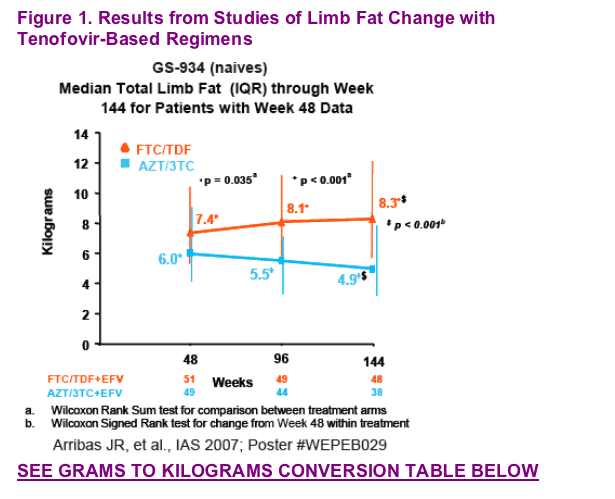
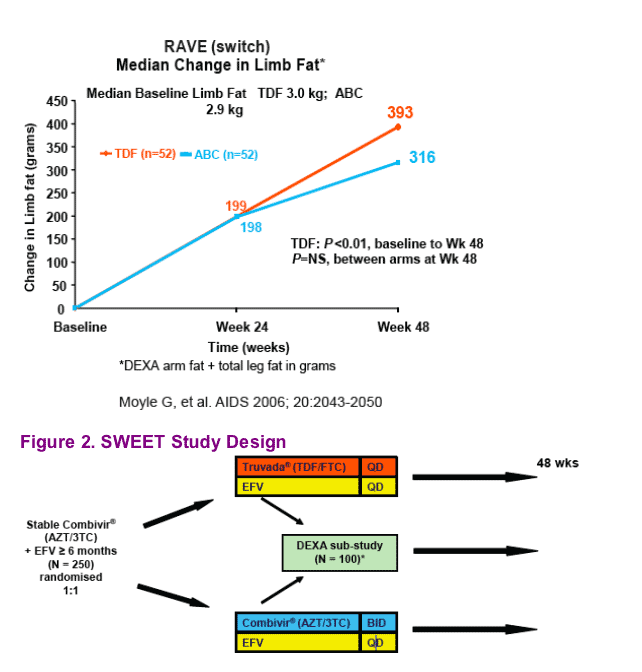
· Undetectable viral load ( 50copies/ml)
· Adequate Baseline Renal (CrCl >60ml/min) and Hepatic (AST / ALT <5 x ULN) function. HBsAg negative
· No known resistance to TDF, FTC, AZT, 3TC or EFV
·*101 randomized, 100 patients treated
SWEET = Simplification With Easier Emtricitabine and Tenofovir
OBJECTIVES
DEXA Sub-study:
To assess whether therapy simplifi cation with Truvada leads to improved fat recovery and fat sparing relative to AZT-based therapy
To assess whether there is a change in bone mineral density (BMD) in the lumbar spine and pelvic parameters with Truvada compared to AZT-based
therapy
Total Study Group:
To assess the renal safety of Truvada compared to AZT- based therapy
To compare the immunological and virological outcomes for patients in the
total study group
METHODS
48 week multicentre, prospective, open label, randomised (1:1) study
24 sites in UK and Ireland
- 234 subjects enrolled and received at least one dose of study drug
All subjects in specific centres were given the option to participate in the
DEXA sub-study at screening
- Subjects in this analysis had paired Baseline and Week 48 assessments
-- No requirement for clinical signs of lipoatrophy
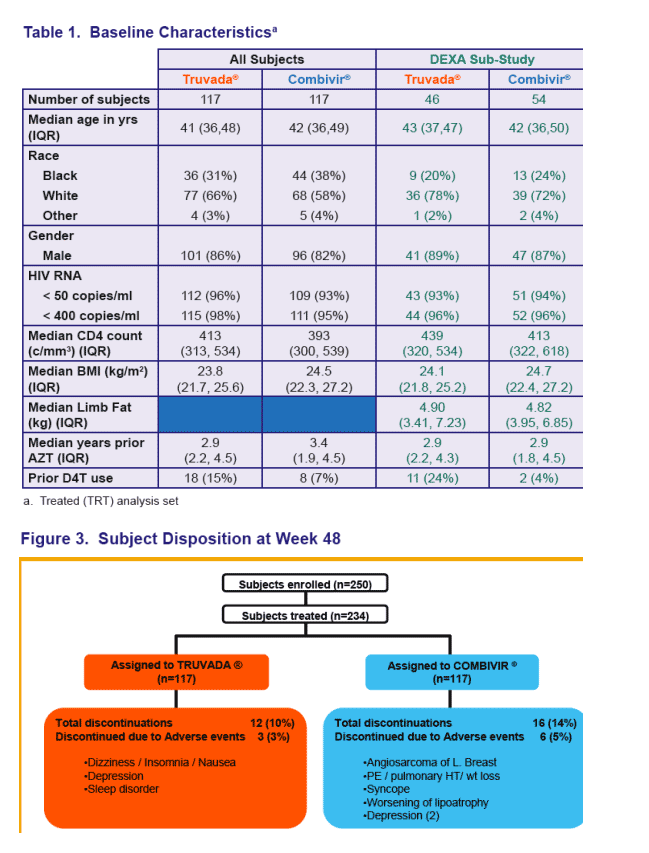
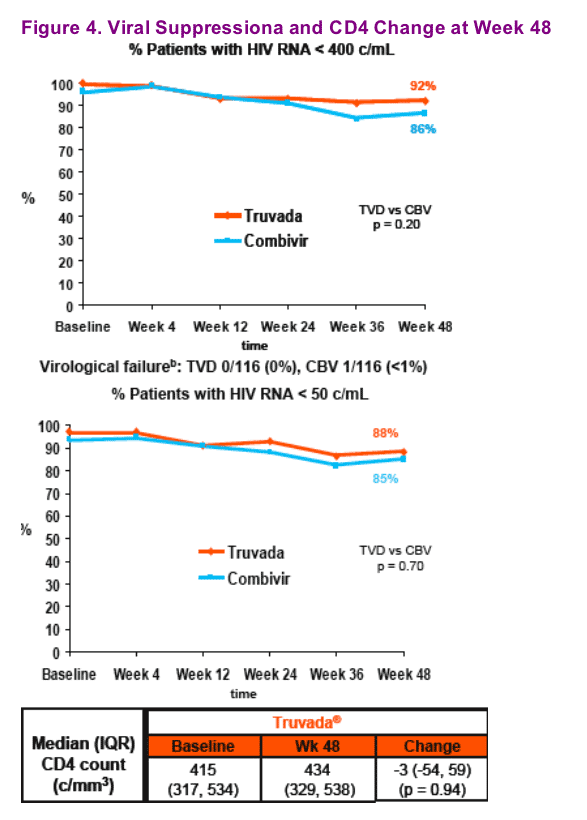

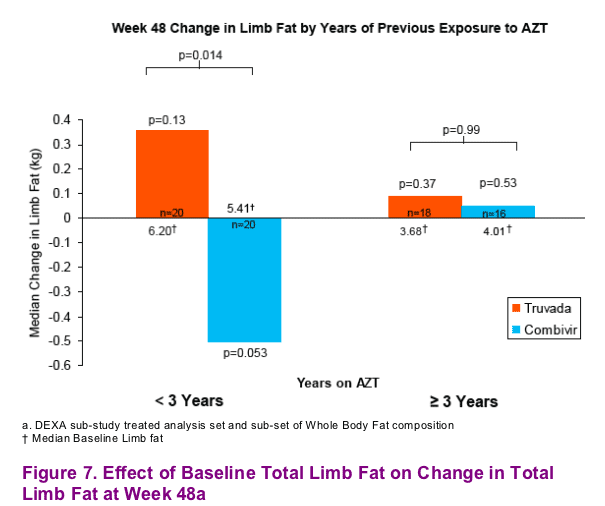
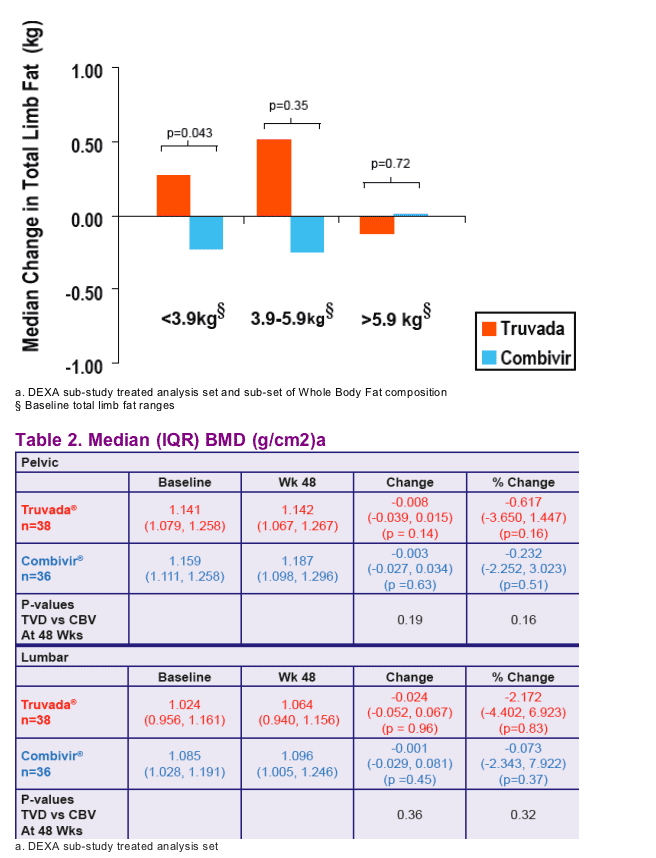
Over the study period there were no signifi cant change in lumbar spine or pelvic BMD
Lumbar Spine BMD correlates with Hip BMD5
The lack of significant lumbar spine BMD changes from baseline in the DEXA
sub-study group suggests that patients did not have an increased relative risk of fracture due to study drugs at 48 weeks
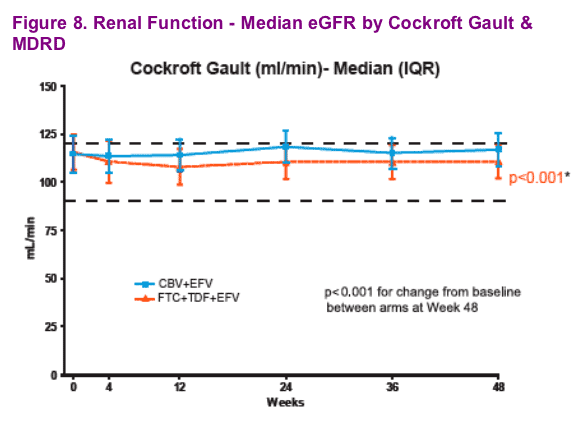

Median Creatinine (_mol/L) - Change from Baseline at Wk 48, (TVD) 3, p<0.001, (CBV) -1, p=0.57
Median Phosphorus (mmol/L) - Change from Baseline at Wk 48: (TVD) -0.01, p=0.50, (CBV) -0.04, p=0.67
No subject experienced a grade 3 or 4 renal abnormality in either arm
*Week 48 change from baseline In FTC+TDF+EFV arm
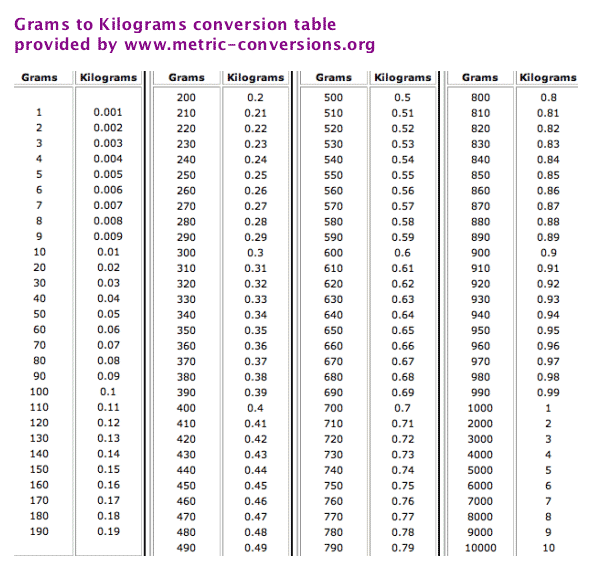
REFERENCES
1. European Aids Clinical Society (EACS) Guidelines 2007. www.eacs.eu.
2. Panel of Antiretroviral Guidelines for Adults and Adolescents. Guidelines for the use of
antiretroviral agents in HIV-1-infected adults and adolescents. Department of Health and
Human Services. January 29, 2008.
3. Moyle, G., et al; The RAVE study. AIDS 2006, 20: 2043-2050.
4. Martinez E., et al; The BICOMBO study. 4th IAS, 22-25th Jul 2007, Sydney, Australia; #WESS102.
5. J Newton at al. Age and Ageing 2003; 32: 497-502.
|
| |
|
 |
 |
|
|